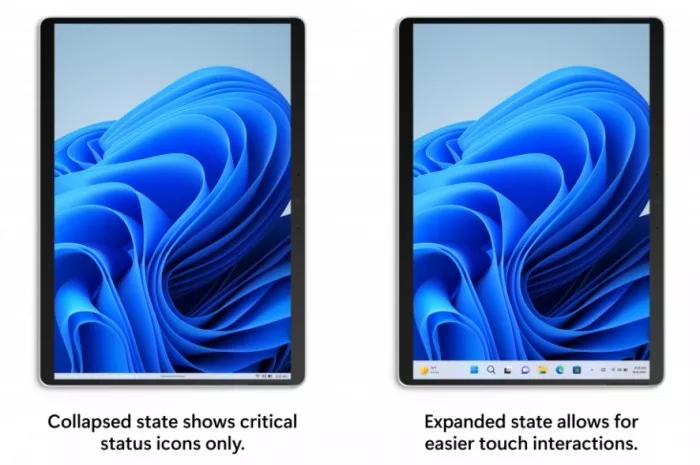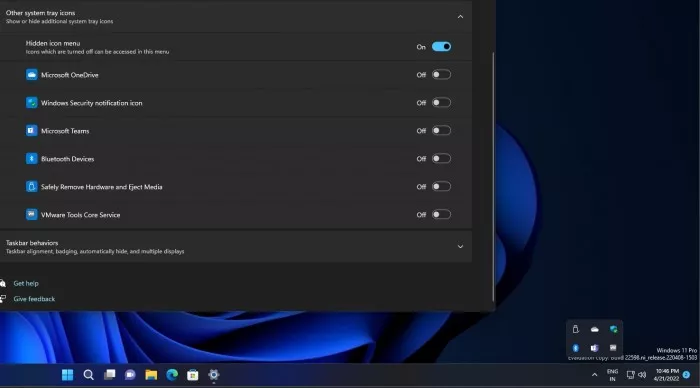Unlike windows 10, windows 11 is not equipped with a special tablet mode, so Microsoft decided to improve the desktop user experience to better support tablets. The company previously adopted this method for Windows 8. It goes without saying that windows on two in one computers is strengthening its support for this type, but there is still room for improvement.
In the recent preview version, Microsoft has made some improvements and key changes to the taskbar to better support the taskbar on tablets or two in one devices.
For example, Microsoft has created a new minimized taskbar interface to take up less space when it is not in use. This is particularly useful for small screen tablets because it provides more space for applications running on the device, similar to the way mobile operating systems work.
Like Android or IOS, you can slide up from the taskbar to expand it and access pinned applications. When the user's finger slides upward from the bottom of the tablet desktop, a thickened taskbar will appear with a large icon to help tablet users easily click the icon.
This may sound like a good idea, but there's a problem -- Microsoft's new features make windows The system tray function in 11 is more difficult to use. In order to better support this new tablet optimized taskbar, Microsoft has directly eliminated the ability to drag and drop icons displayed in or around the system tray.
With the launch of windows 11 build 22610, Microsoft has now cancelled the taskbar of "tablet optimization" due to the feedback of early testers. It seems that the company has received a lot of negative comments, because the tablet optimized taskbar eventually led to usability problems on the tablet.
Microsoft has made it clear that this feature will not return soon, which means that it will not be released with the anniversary update of windows 11. As Microsoft officials said before, the functions appearing in beta or dev channels do not always see the dawn.
Although the tablet optimized taskbar has been withdrawn from the preview, users still cannot reorder / drag and drop icons in or around the system tray.
In other words, if you want to reorder the icons in the system tray, or when the icons are outside the system tray, the only option is to use the settings application and manually switch all icons on / off (if available). In an article in the feedback center, Microsoft previously confirmed that the drag and drop function of the system tray was removed and used for the taskbar of tablet optimization.
"We will continue to follow this feedback, but as we update the taskbar optimized for the new tablet in build 22563, we no longer support dragging icons in the system tray or between the system tray and the display of hidden icons flying out. Instead, we should use the set & gt; personalization & gt; taskbar & gt; system tray section to manage these icons," Microsoft said.
At this point, we don't know whether Microsoft is still willing to undo this unnecessary change to the taskbar because the company doesn't talk about it on any public platform. So if you care about this question, please make sure you vote for the feedback post in the feedback center so that the missing drag and drop function in the system tray can be restored. Windows 11 22h2 will enter RTM later this month, so if you start now, the development team still has enough time.


